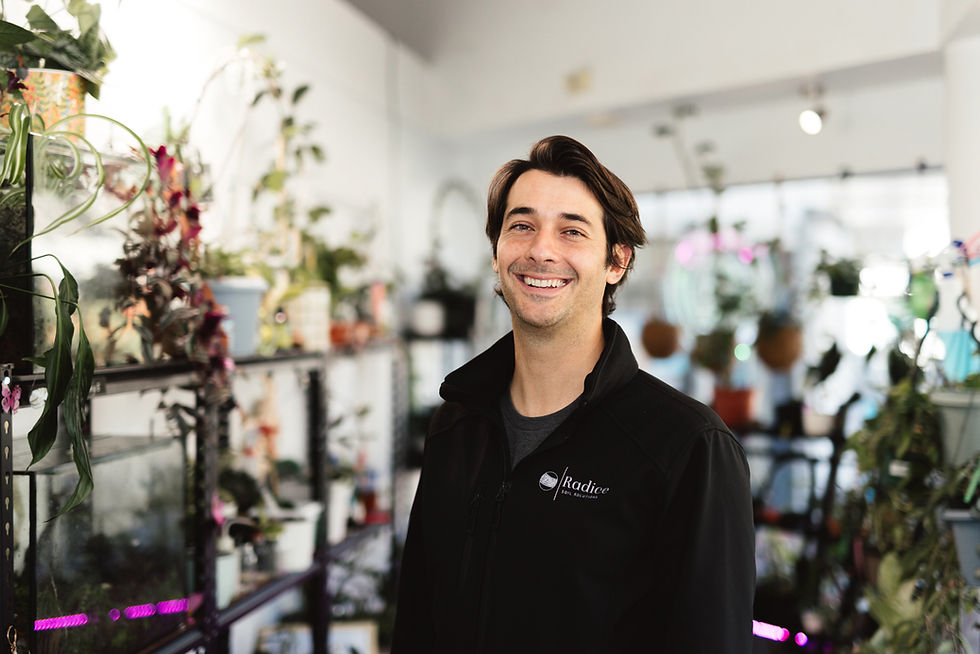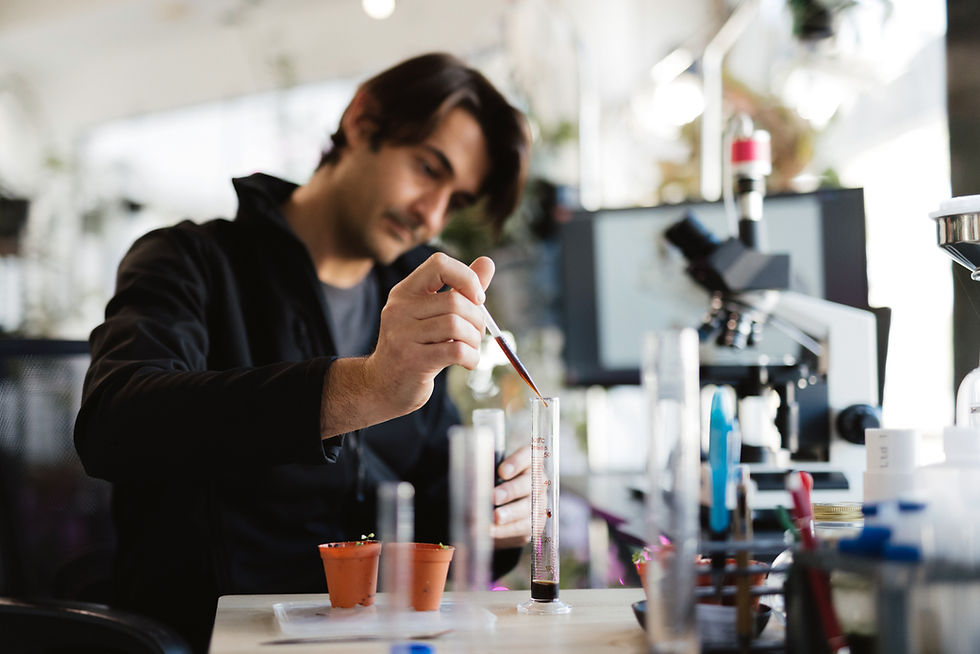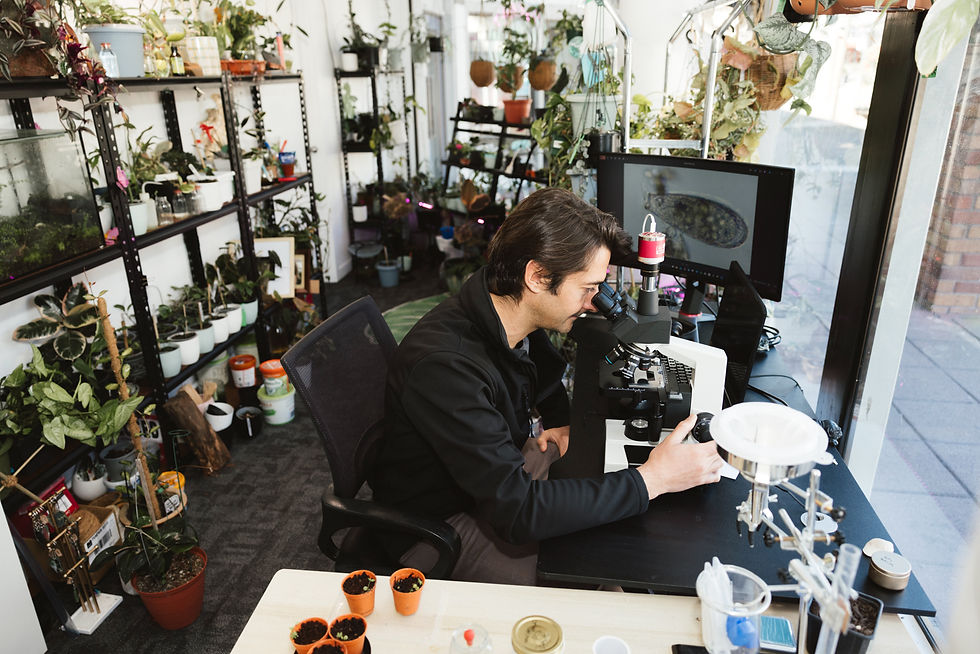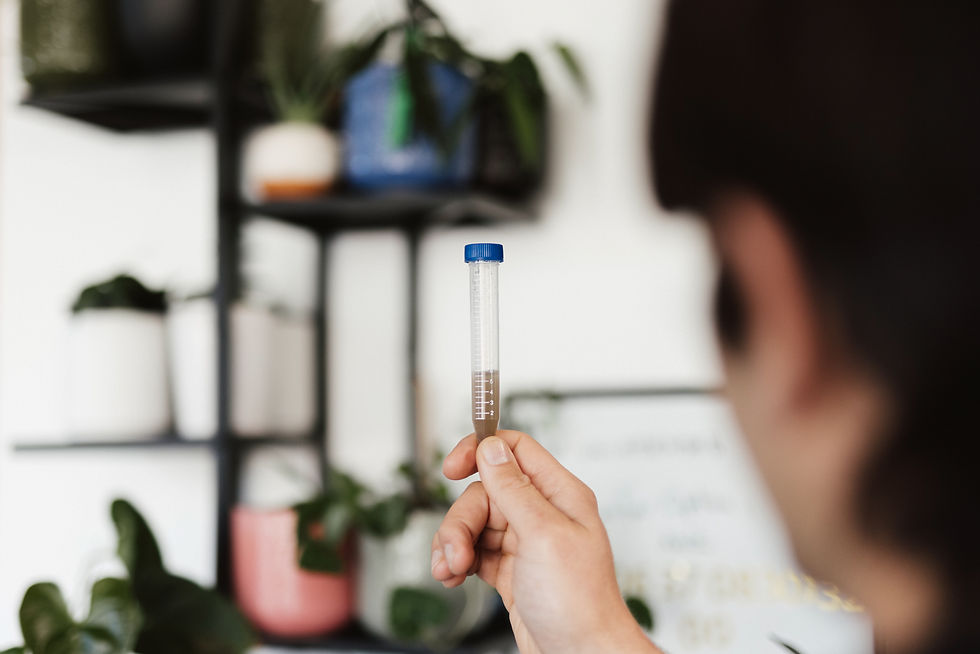Radice Soil Solutions
- Aimee Vickers
- Aug 13
- 3 min read

This is another one of those stories (we never get sick of them) that proves you can
work in a small, isolated town at the bottom of the world and still be recognised on the
international stage. Jacopo Orazi might have chosen to start his business, Radice (Ra-
dee-che) Soil Solutions in the stunning town of Sirolo, Italy, but for him, there was one
thing missing from his hometown. Surf. It was the surf that brought him to Gisborne
twelve years ago, and we are all the better for it.
Radice, which means ‘root’ in Italian, was recently shortlisted for the Falling Walls
science breakthrough awards in Berlin, Germany. Jacopo’s application was selected
from over 250 other international applications. The global recognition is impressive, but
it also speaks to the importance of the kaupapa. Soil health. We don’t talk about it
enough. Not on a large agricultural scale anyway. I’ve written about soil health and
backyard food forests before. At an individual and whānau level, I found no down sides
to improving the soil and biodiversity on my own little patch. I get excited when I imagine
those positive outcomes at a community level.
Imagining forest and soil restoration on a global scale can feel like wishful thinking. It
brings to mind the film Don’t Look Up, a satire on the absurdity of science denial. No
doubt, there will be those who say, “Don’t Look Down” when faced with the idea of soil
restoration as a solution. But it could literally save the world. Soil health is the key to
healthy and abundant food, clean water, climate resilience and sustainable food
production. Again, there are no down sides!

Politicians often cite economic concerns as a reason to delay environmental progress.
But Radice’s soil improvement service proves that sustainability and profitability can go hand in hand. Large agricultural businesses don’t have to choose between the two. Why would anyone continue to use chemicals and costly fertilisers if they didn’t have to?
Jacopo says his clientele varies and he adapts his approach with each organisation
according to their needs. Plans have been customised with iwi, farmers and orchardists
and he recognises that each have a special relationship with the land.
The science of soil health is complex and involves sampling, microscopes and years of
acquired knowledge. But the concept is actually very simple. If you’ve ever made sour
dough or rewena bread, you’ll know that you need a starter. To make a starter you feed
it, and after a few days a diverse community of microorganisms spring to life. Now you
have a starter to make as much bread as you like, for as long as you like. The same
principle applies to soil. With permission, Jacopo transplants a small sample of soil from
undisturbed areas like native forests and adds it to a compost. Microorganisms from the
sample flourish in the compost and that becomes the soil starter.

Damian (Day Whaanga) from Rongowhakaata Iwi Trust, wanted to gain a scientific
understanding of soil health to support their restoration efforts. Rongowhakaata have
aspirations to transition agricultural land back to native forest. Before seeking Jacopo’s
service, Day says they didn’t have a baseline measurement for soil health. Their knowledge was all based on observation, like checking for worms and visual signs like colour and structure. But there is a whole universe underneath us that can’t be seen with the naked eye. Radice Soil Solutions enables people to see inside that fascinating world. For Day, there’s also a cultural significance to soil health. ‘Before colonisation, much of this area was remnant forest, and you can clearly see the decline in the land’s health.’ They are now looking for ways to remediate that. To decolonise the land.

There is already a lot of evidence about the negative impacts of current land use
practices. A growing number of people are trying to do things differently. Jacopo is there
to support their drive for change. One example of how small, simple changes can yield big results in forest restoration is to shift away from using herbicides. Instead, mulching
with cardboard and bark and sowing clover seeds as a cover crop. While mulch just
suppresses weeds, a living mulch like clover brings in nutrients from the sun,
encourages bacteria and fungi, and helps feed the soil.
Day says he really valued the collaborative aspect of soil restoration. His relationship
with Jacopo wasn’t transactional, it was an exchange of knowledge. And that’s exactly
what Radice Soil Solutions is shortlisted for at the science awards: outstanding
community engagement. Days group started with a four-day tailored workshop, which
he says was hugely beneficial for the whole team. Keep an eye on Radice soil solution
socials as Jacopo runs free Healthy Soil introductory workshop at EIT a few times a
year.
Find out more at https://radicesoil.com
Photos by Jordan Perry








